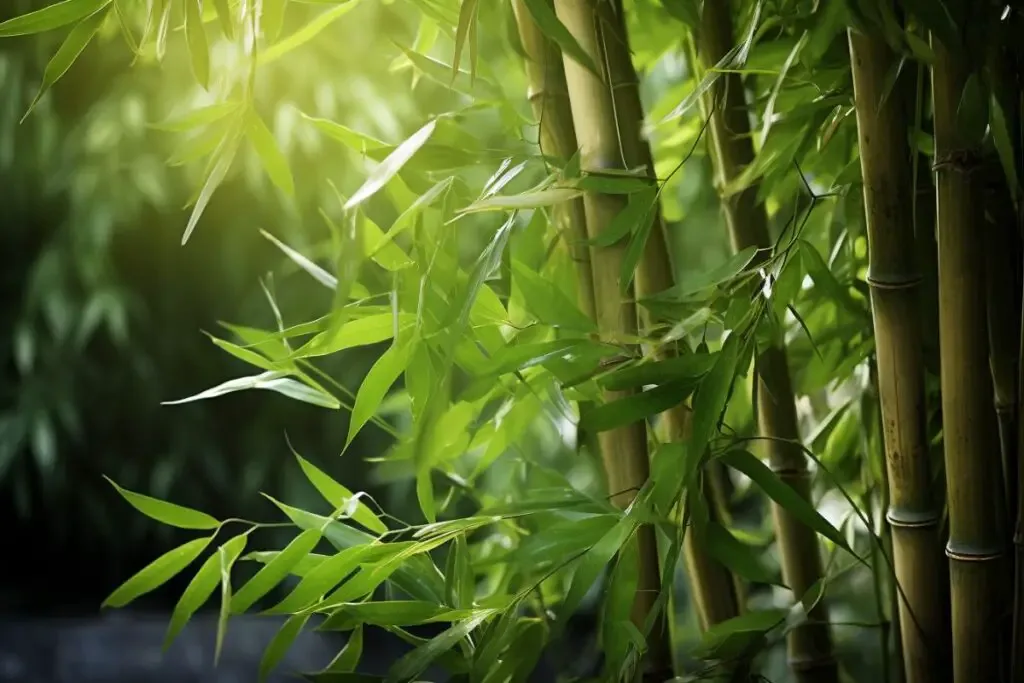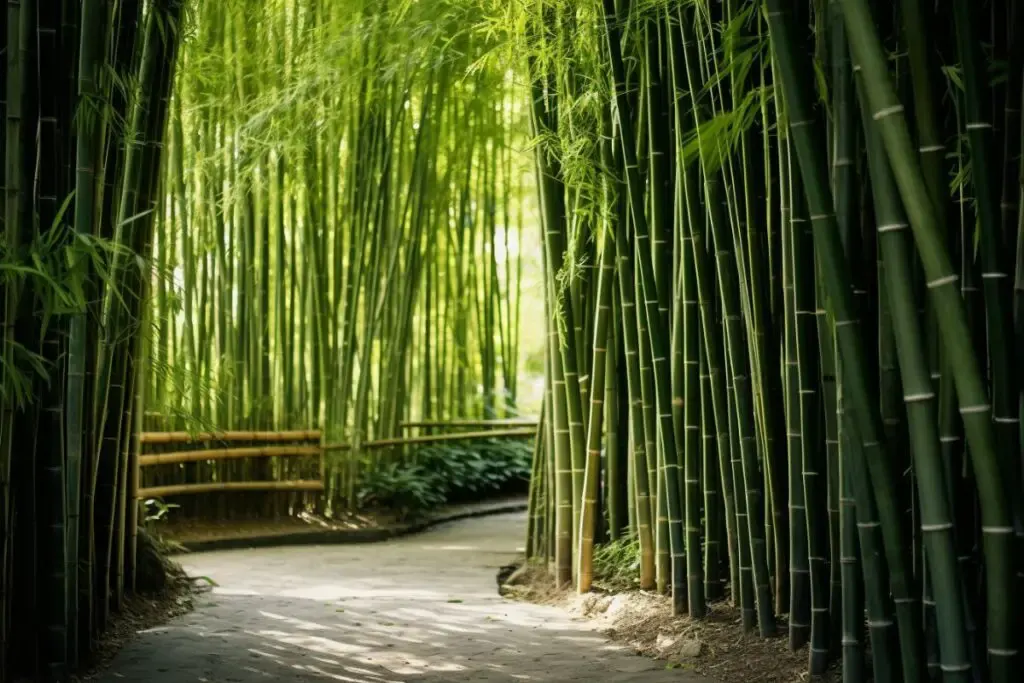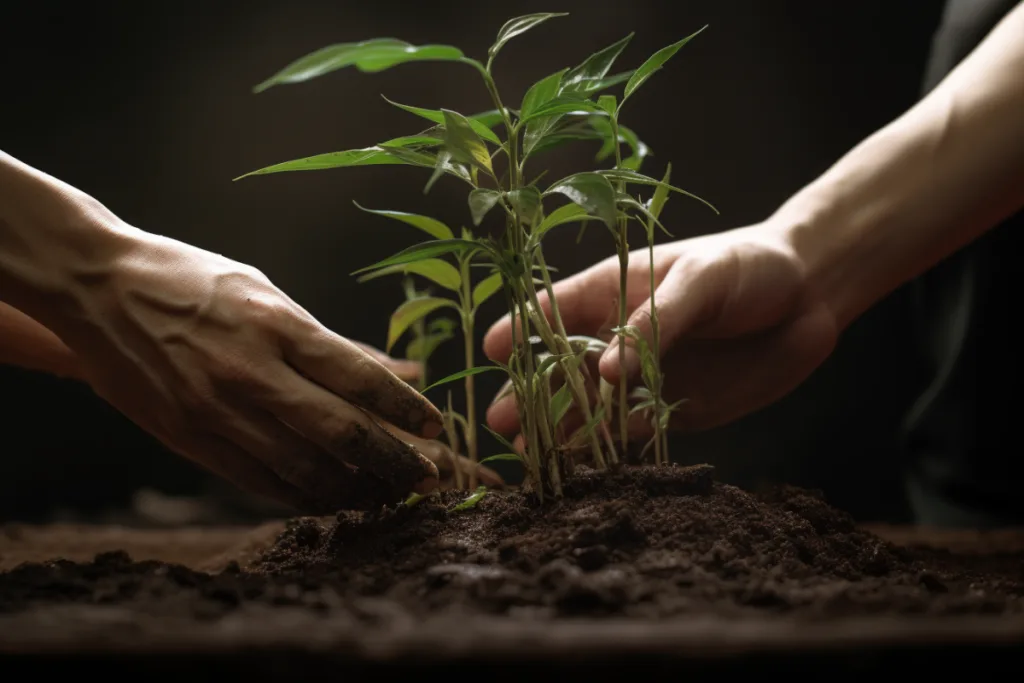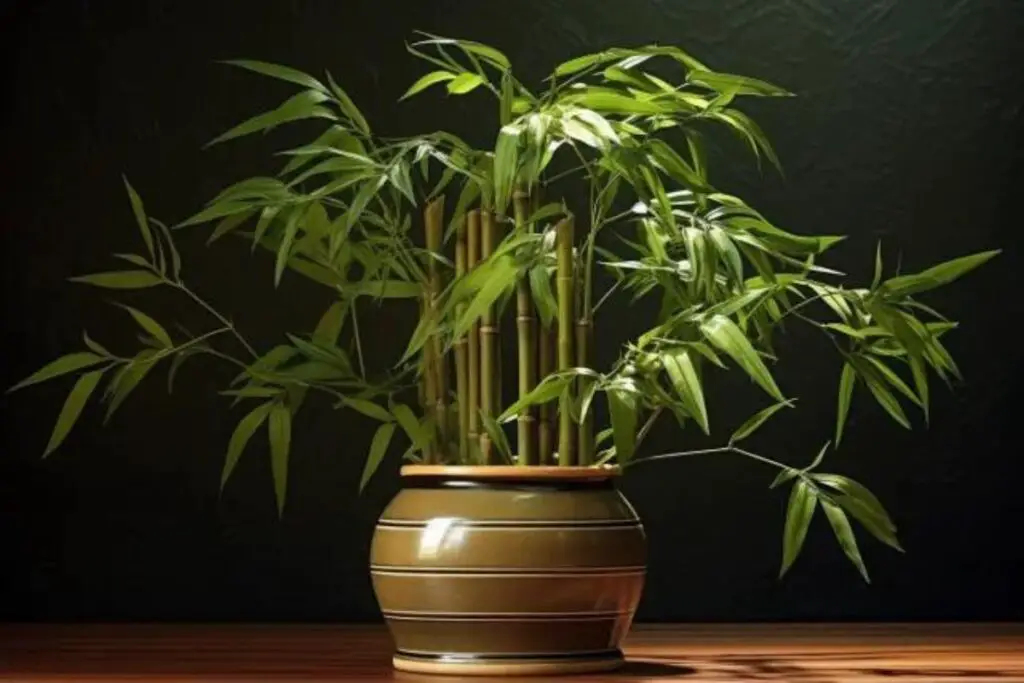Bamboo plants are not only beautiful additions to your garden but also versatile and easy to maintain. These graceful, fast-growing plants have been cherished in various cultures for centuries, and it’s no wonder why.
In this comprehensive guide, we will explore the benefits of growing bamboo plants and discuss some of my favorite bamboo varieties that you can consider for your garden.
Benefits of Growing Bamboo

Bamboo plants offer a plethora of advantages that make them a fantastic choice for both novice and experienced gardeners.
Here are three key benefits:
1. Aesthetic Appeal
Bamboo’s elegant, tall canes and lush foliage can enhance the visual appeal of any garden. Whether you’re creating a zen-inspired space or a tropical oasis, bamboo can provide the perfect backdrop or focal point for your landscape.
2. Eco-Friendly Choice
Bamboo is an environmentally sustainable plant. It grows rapidly, often outpacing other vegetation, which makes it an excellent choice for those looking to reduce their carbon footprint.
Additionally, bamboo doesn’t require the use of harmful pesticides or excessive water, making it a low-maintenance and eco-conscious landscaping option.
3. Versatility and Utility
Apart from its ornamental value, bamboo has countless practical uses. From constructing garden trellises, fences, and privacy screens to crafting furniture and utensils, bamboo’s strength and flexibility make it an ideal material for a wide range of DIY projects.
My Favorite Bamboo Varieties
Now that we’ve explored some of the benefits of growing bamboo, let’s delve into some of my personal favorite bamboo plant varieties. Each of these offers unique characteristics that can elevate your garden’s aesthetics and functionality.
1. Golden Bamboo (Phyllostachys aurea)

Golden Bamboo is a popular choice due to its vibrant golden-yellow canes, which create a stunning contrast against the lush green foliage.
It’s a clumping bamboo, making it an ideal option for those concerned about it spreading too aggressively. Golden Bamboo is excellent for adding a touch of elegance and brightness to your garden.
2. Black Bamboo (Phyllostachys nigra)

Black Bamboo, as the name suggests, features dark blackish-purple canes that become even more pronounced as the plant matures.
Its slender and graceful appearance makes it a fantastic choice for creating a striking focal point in your garden. Just be sure to provide it with ample sunlight for the deepest coloration.
3. Bambusa Oldhamii (Giant Timber Bamboo)

If you’re looking for a bamboo variety that grows tall and offers an impressive canopy, Bambusa Oldhamii is a top contender.
With its towering presence and lush foliage, it can provide shade, privacy, and a tropical ambiance to your outdoor space. It’s known for its rapid growth, so be prepared to witness your garden transform quickly.
Bamboo Care
Now that you’ve chosen your favorite bamboo varieties, it’s time to dive into the essential care guidelines to ensure their healthy growth and longevity.
Let’s explore the key aspects of caring for your bamboo plants.
Planting

When it comes to planting bamboo, proper preparation is crucial. Follow these steps for a successful planting process:
1. Choose the Right Location:
- Bamboo thrives in well-draining soil and requires plenty of sunlight. Select a spot in your garden that receives at least 4 to 6 hours of direct sunlight per day.
- Ensure there’s enough space for your chosen bamboo variety to grow without crowding other plants or structures.
2. Soil Preparation:
- Prepare the soil by adding organic matter like compost or well-rotted manure to improve fertility and drainage.
- Bamboo prefers slightly acidic to neutral soil with a pH level between 6.0 and 7.0.
3. Planting Depth:
- Dig a hole that’s twice as wide as the bamboo root ball but just as deep. Make sure the top of the root ball is level with the surrounding soil.
4. Mulch and Water:
- Apply a layer of mulch around the newly planted bamboo to retain moisture and suppress weeds.
- Water thoroughly after planting to settle the soil and hydrate the roots.
Light
Proper lighting is essential for bamboo growth. Here’s what you need to know about providing the right amount of sunlight:
- Most bamboo varieties thrive in full sun. Ensure they receive at least 4 to 6 hours of direct sunlight daily.
- If you’re growing bamboo indoors or in a shaded area, select a bamboo variety that is suitable for low-light conditions.
Soil
Bamboo is particular about its soil conditions. Here are some soil-related care tips:
- Bamboo prefers well-draining, loamy soil. It dislikes waterlogged or compacted soil, which can lead to root rot.
- Amending the soil with organic matter can improve drainage and fertility.
Water
Proper watering is crucial to keep your bamboo plants healthy. Follow these watering guidelines:
- Bamboo likes consistently moist soil but not soggy conditions. Water deeply and regularly, especially during dry spells or in the first year after planting.
- Mulch helps retain soil moisture and reduces the need for frequent watering.
Temperature and Humidity
Understanding the temperature and humidity requirements of your bamboo plants is essential for their well-being:
1. Temperature Tolerance:
- Most bamboo varieties are hardy and can tolerate a range of temperatures. However, some are more cold-sensitive than others.
- Research the specific temperature tolerance of your chosen bamboo variety and provide protection if needed during extreme cold.
2. Humidity:
- Bamboo generally prefers higher humidity levels. If you’re growing bamboo in a dry climate, consider using a humidifier or misting the plants regularly.
Fertilizer
Feeding your bamboo plants the right nutrients is essential for healthy growth:
- Use a balanced, slow-release fertilizer or one specifically formulated for bamboo during the growing season (spring and summer).
- Avoid excessive nitrogen, which can lead to rapid but weak growth.
Pruning
Pruning bamboo is essential to maintain its shape, size, and overall health. Here’s how to do it:
1. Pruning Frequency:
- Regularly inspect your bamboo for dead or damaged canes and remove them promptly. This helps prevent disease and maintains a neat appearance.
- Consider thinning out overcrowded canes to improve air circulation and sunlight penetration.
2. Pruning Techniques:
- Use sharp pruning shears or a pruning saw to cut canes at a 45-degree angle just above a node (the raised bump on the cane).
- Trim the branches and leaves to shape your bamboo and encourage upward growth.
3. Timing:
- Late winter or early spring is the ideal time for major pruning as bamboo is dormant during this period.
Propagating
If you want to expand your bamboo garden or share bamboo with others, propagation is the way to go. Here are a few methods to propagate bamboo:
1. Division:
- Divide mature bamboo clumps by digging them up and separating the rhizomes (underground stems). Each section should have some canes and roots.
- Replant the divided sections in a suitable location.
2. Rhizome Cuttings:
- Cut rhizome sections with at least one node and a few roots attached.
- Plant the cuttings in a new location, keeping the soil consistently moist until they establish roots.
3. Root Ball Division:
- For clumping bamboo varieties, divide the root ball into smaller sections, ensuring each section has canes and roots.
- Transplant the divided sections to desired spots.
How to Grow Bamboo from Seed
While bamboo is more commonly propagated through rhizome division, you can also grow it from seeds. Here’s how:
1. Seed Collection:
- Collect mature bamboo seeds from your existing plants or purchase them from a reputable source.
2. Germination:
- Soak the seeds in warm water for 24-48 hours to soften the outer shell.
- Plant the seeds in well-draining soil in pots or trays. Cover them lightly with soil.
- Keep the soil consistently moist and maintain a temperature between 70-80°F (21-27°C) for germination.
3. Transplanting:
- Once the seedlings have several leaves and are a few inches tall, transplant them to their permanent outdoor location or larger pots.
Growing in Pots

If you have limited garden space or want to control bamboo’s growth, growing it in pots is a great option:
1. Selecting the Right Pot:
- Choose a large, sturdy container with drainage holes to prevent waterlogged soil.
- Use a well-draining potting mix suitable for bamboo.
2. Regular Maintenance:
- Bamboo in pots requires more frequent watering and fertilizing than those in the ground.
- Consider repotting every 2-3 years to prevent root-bound plants.
Overwintering
Protect your bamboo during the colder months to ensure its survival:
1. Mulching: Apply a thick layer of mulch around the base of bamboo plants to insulate the roots and protect against freezing temperatures.
2. Wind Barriers: Install windbreaks or screens to shield bamboo from harsh winter winds.
3. Potted Bamboo: Move potted bamboo indoors or to a sheltered area to protect it from extreme cold.
Transplanting
If you need to move your bamboo to a new location, follow these steps:
1. Digging: Carefully dig around the bamboo clump, taking care not to damage the roots or canes.
2. Root Ball: Lift the bamboo with as much of its root ball intact as possible.
3. Replanting: Transplant the bamboo to its new location, ensuring it has the right soil conditions and adequate space.
Common Pests & Diseases
While bamboo is generally hardy, it can still face some common issues:
Pest:
- Watch out for pests like aphids, mealybugs, and bamboo mites. Use insecticidal soap or neem oil to control infestations.
Diseases:
- Bamboo is susceptible to root rot, especially in poorly draining soil. Ensure proper soil drainage to prevent this issue.
By following these guidelines for pruning, propagating, growing from seed, pot cultivation, overwintering, transplanting, and addressing common pests and diseases, you’ll be well-equipped to care for your bamboo plants and enjoy their beauty and benefits in your garden.
Happy gardening!

